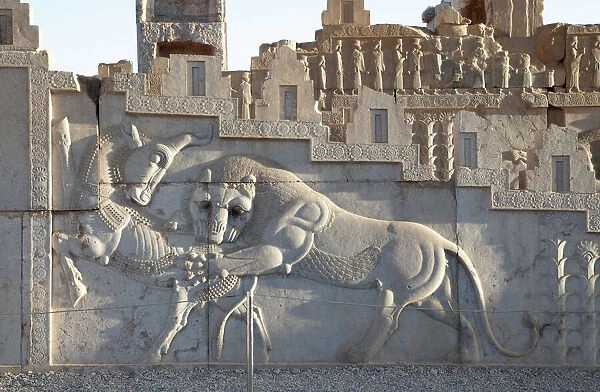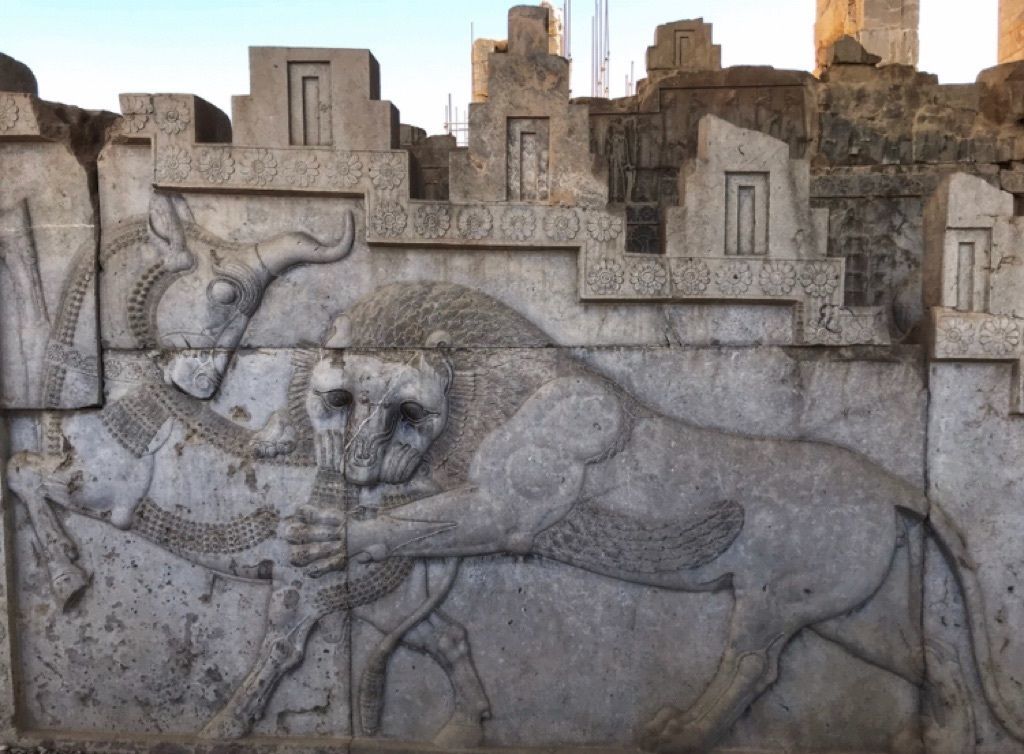In the heart of Persepolis, the ceremonial capital of the Achaemenid Empire, lies a striking artifact that captures a timeless struggle of power and symbolism. This limestone frieze, dating back to between 358 and 338 BC, is a breathtaking example of ancient art and imperial grandeur. Located on the stairway facing Palace H, this dramatic relief portrays a fierce combat between a lion and a bull, each representing potent symbols of strength and authority in ancient Persia.
A Symbolic Showdown
The lion and bull in combat are not just mere figures of artistic expression but embody profound symbolic meanings. The lion, often depicted as a symbol of absolute power and heroic triumph, stands as a testament to the divine authority and might of the Achaemenid kings. Its battle with the bull, a symbol of power and fertility, reflects a deeper narrative of strength versus resilience. This dynamic portrayal underscores the eternal struggle and balance of these forces, mirroring the political and social ethos of the Achaemenid Empire.

Masterful Craftsmanship
The frieze is a marvel of Achaemenid artistry, showcasing the skilled craftsmanship of ancient Persian artisans. The meticulous detailing of the animals— from the fierce expression of the lion to the powerful stance of the bull— illustrates the high level of sophistication in Achaemenid art. The textures of the animals’ fur and the muscular tension in their forms are rendered with striking precision, demonstrating the artisans’ mastery over their craft and their ability to convey movement and emotion through stone.

Historical Significance
Persepolis was not just a royal residence but a grand ceremonial center designed to reflect the might and majesty of the Achaemenid rulers. The frieze was strategically placed on the stairway leading to Palace H, enhancing the ceremonial experience of those ascending to the throne room. This placement emphasized the grandeur of the royal presence and reinforced the king’s power and divine right to rule.

Enduring Legacy
Despite the passage of over two millennia and the ravages of time— including the significant damage inflicted by Alexander the Great in 330 BC— the frieze has remarkably endured. It stands as a powerful reminder of the Achaemenid Empire’s artistic and symbolic achievements, offering a window into the past for modern viewers. The relief remains a testament to the rich cultural and historical legacy of ancient Persia, capturing the imagination of those who encounter it.

The lion and bull combat frieze at Persepolis is more than just an ancient carving; it is a compelling narrative chiseled in stone, blending art, symbolism, and imperial majesty into an enduring masterpiece of Achaemenid culture.

